Georges Seurat (Paris, 1859 - 1891) was one of the greatest French painters of the 19th century, the creator ofpointillism (pointillisme), the painting technique that uses small amounts of color by combining them in such a way as not to mix them, so that it is the optical effect given by the proximity and contrast of these dots that mixes the colors. He is considered one of the great painters of postimpressionism along with Paul Cézanne, Paul Gauguin and Vincent Van Gogh, and influenced the twentieth-century avant-garde with his works.
His artistic evolution revolves around the study of colors and light: he himself said that “art is harmony. Harmony is the analogy of contrasts, the analogy of similarities, of tone, of shadow, of line, considered by the dominant, and under the influence of happy, calm or sad combinations of light.”
Seurat also believed that scientific rigor could be combined with creative freedom: “One must observe nature with the eyes of the spirit and not only with the eyes of the body, like a being without reason [...]. There are painter’s eyes like tenor voices, but these gifts of nature must be nourished by science to reach their full development [...]. Science frees one from all uncertainties, allows one to move freely in a very extensive domain, it is therefore a double insult to art and science to believe that one necessarily excludes the other. Since all rules are inherent in the very laws of nature, nothing is simpler than to identify their principles, and nothing is more indispensable. In art, everything must be wanted.”

Georges Pierre Seurat was born on December 2, 1859 in Paris, the son of a bourgeois couple. His father Chrysostome Antonine Seurat was a bailiff, and his mother Ernestine Faivre took care of the family. From an early age Seurat became interested in drawing and painting, thanks to his uncle Paul Haumenté, an amateur painter, who taught him the basics. He enrolled in a drawing school and had sculptor Justin Lequien as his teacher. During those years Seurat devoted himself mainly to drawing, learning from past masters through copying their work.
In 1867 the book Grammaiere Des Arts du Dessin by the art critic Charles Blanc came out, a text that greatly excited Seurat. Blanc theorized a new painting: through the study of primary and complementary colors and their proper use, colors could be juxtaposed in such a way that they influenced each other, so as to achieve greater expressiveness. With his fellow student and friend Edmond Aman-Jean, he enrolled at theÉcole des Beaux-Arts in 1878. At the academy, Seurat devoted himself not only to drawing but also to reading and studying texts such as Goethes ’ The Theory of Colors and Chemist Michel Eugène Chevreul’s Law of Simultaneous Color Contrast. These are theories and techniques that the Impressionists had also tried (given with small brush strokes, complementary colors when mixed go out but when side by side they light up): however unlike the Impressionists Seurat’s painting is more mathematical, since he studied his technique in a scientific way leaving nothing to chance.
In 1879 Seurat and Aman-Jean and Ernest Laurent visited the fourth Impressionist exhibition, and were deeply impressed by the new style of painting: they decided to stop attending the academy, since the new artistic current inspired them to create something of their own. They rented a studio together where they could discuss their theories and paint their first canvases(Head of a Girl, 1877-1879). At the end of the year Seurat was called up by the army to fulfill his conscription obligations, and spent a year of service at Brest (a port city in Brittany): here he devoted himself to drawing, refining his chiaroscuro technique. He returned to Paris in 1881, rented a studio of his own, and continued to study painting and color, putting practice alongside theory, studying texts such as Modern Chromatics by the American physicist Odgen Rood .
In 1884 the Society of Independent Artists(Société des Artistes indépendants) was created, which organized the Salon des Indépendants: the exhibition went against the Salon of the Academy (an exhibition reserved for artists selected by the Academy’s jury) and generally against those organized by official institutions. The Salon des indépendants opened on December 1 of that year, 450 artists took part, and Seurat participated with A Bath at Asnières(1883-84). He joined the Society of Independent Artists where he met the painter Paul Signac, and by exchanging theories and opinions with him the two artists influenced each other: Seurat removed earthy colors from his palette and Signac became interested in the theory of color contrast. In the late 1980s, Seurat made many trips to Normandy: he visited Grandcamp-Maisy and Port-en-Bessin in particular. In these places of great inspiration Seurat painted the sea and its beaches, and from this period we are left with paintings such as Grandcamp, an evening (1885) and Port-en-Bessin, outpost, high tide (1888).
He participated in 1886 in the second Salon des Indèpendants and also in the last Impressionist exhibition with the work A Sunday at Grande-Jatte (1884-86). The canvas was not immediately successful, raised heated arguments and heavy criticism, but nevertheless became the manifesto of the new painting current, Neo-Impressionism. In secret, the artist cultivated an affair with model Madeleine Knobloch: Signac portrayed her in Young Woman Powdering Her Face (1889-90). The relationship was discovered by friends and family when in 1890 Madeleine gave birth to their son, Pierre Georges, although they were not married Seurat recognized him as his own. In his later years Seurat devoted himself to painting moving scenes: in most of his works the protagonists are static, frozen in time. One subject that lent itself to this project was the world of entertainment. Such themes as Chahut dancers (Can-Can-like dancing) and circus performers are the subjects of canvases such as Le Chahut (1889-90) and The Circus (1890-91). Seurat passed away suddenly on March 29, 1891, probably from diphtheria.
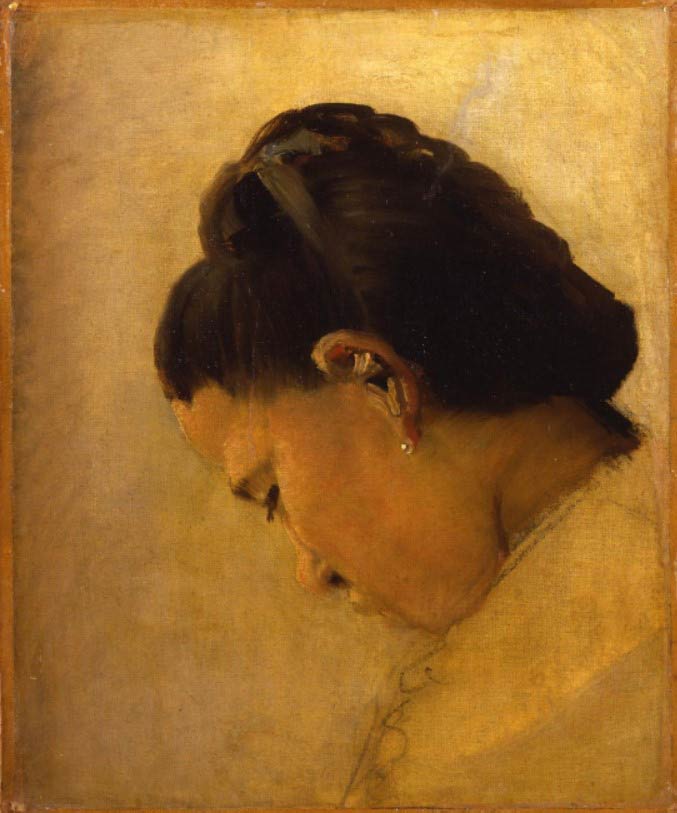
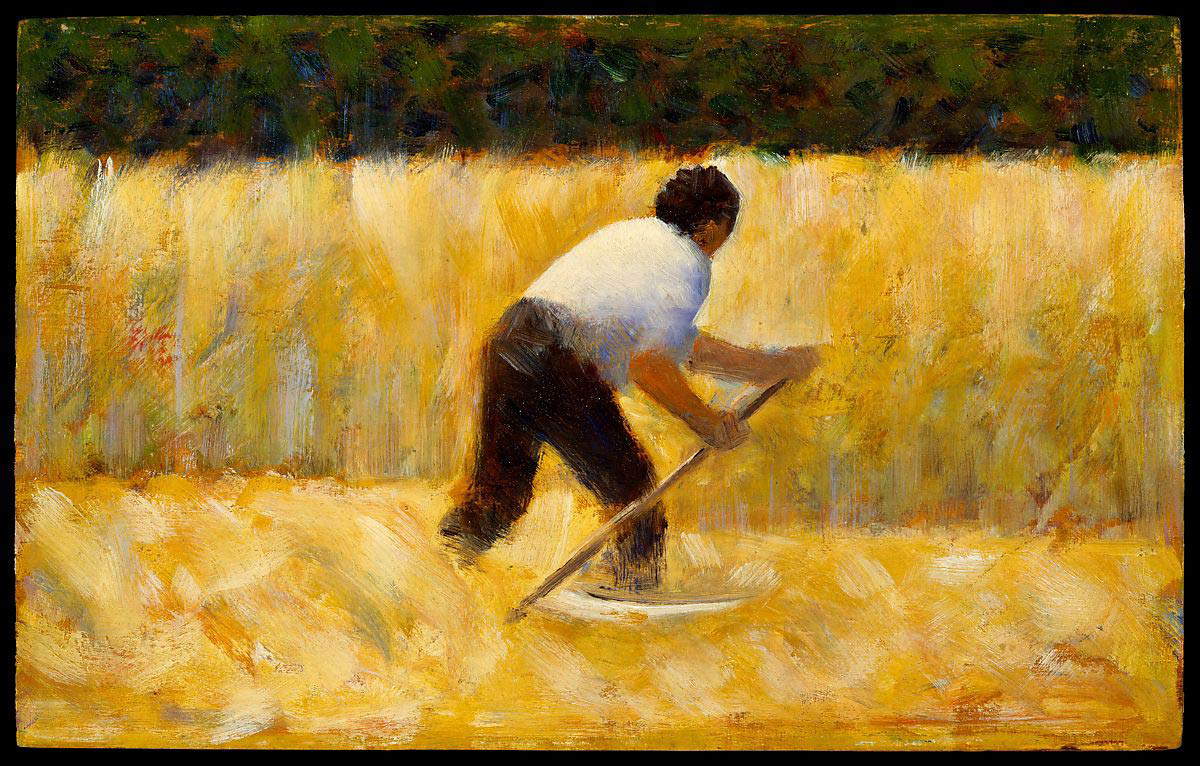


Georges Seurat belongs to the Post-Impressionist painters, and can be considered the father of the pointillist movement. The scientific and analytical study of colors does not preclude in Seurat the study of black and white, light and shadows are the basis of his studies and all his works, preferring the technique of pastel on paper.
After visiting the Impressionist exhibition in 1879 Seurat began to experiment with oil paints, trying to find his own personal style to express himself. This period includes works that are very different from each other, especially in terms of the drafting of color, such as The Forest of Pontaubert (1881) composed with very small and dense patches of color (here the color is mixed and not juxtaposed as in the pointillism technique), and in works of the same years we can see how the gesture of the brushstroke changes, as in The Lawnmower (1881-82) where the movement of the artist’s hand is clearly visible. This continuous experimentation would last until 1884 with A Bath at Asnières, where the style is defined. In the work Seurat portrays men and boys on the bank of the Seine, some bathing and others watching the river, the scene freezes a moment of the day, nothing moves everything is still, statuesque. With this work Seurat anticipates the technique of pointillism, and one can see this especially in the way the artist treats color: in the sky, the grass, the water and the trees in the distance. Seurat also reintroduces into painting the contours of figures that had been lost with Impressionist painting.
The great masterpiece A Sunday at the Grande-Jatte (1884-86) will be the conclusion of all the studies conducted by Seurat, preceded by many studies and preparatory drawings. In the painting A Sunday at the Grande-Jatte Seurat portrays people from all walks of life relaxing in the park. The technique is for all intents and purposes pointillist, with small brushstrokes juxtaposing complementary colors. This scene also appears frozen in time, statuesque; in fact, many of the figures depicted by Seurat are forms taken from Egyptian and Greek sculpture. The work was taken over by Seurat in 1889: the artist decided to add a border made of red, orange, and blue dots, which provided a visual transition from the white frame to the work (the artist would later continue to use this transition in many of his paintings).
The themes depicted by Seurat varied: for example, he portrayed models(Model in Profile, 1887) and in his travels he painted the sea and nature around him, particularly focusing on boats and harbors: in 1888 he visited Port-en-Bessin, of which many paintings remain.
In the late 1880s Seurat began to experiment-a new creative period that unfortunately ended with his untimely death. He began to paint cheerful and festive themes, characterized by moving figures. The Circus (1890-91) is one of the most famous works from this period partly because Seurat could not finish it. This painting is meticulously studied, from the hues of the colors to the directions of the brushstrokes: Final Study for the Circus (1891) is the painting that precedes the final work. In the scene we notice a great color contrast between the audience and the circus people. The audience is depicted in colors tending toward blue and green, and everyone is static and motionless: the circus people are depicted in full motion with warm shades of yellow and red. The painting gives a feeling of happiness and cheerfulness thanks in part to the particular point of view: the spectator is behind the clown who holds the curtain flaps, guiding him inside the stage.
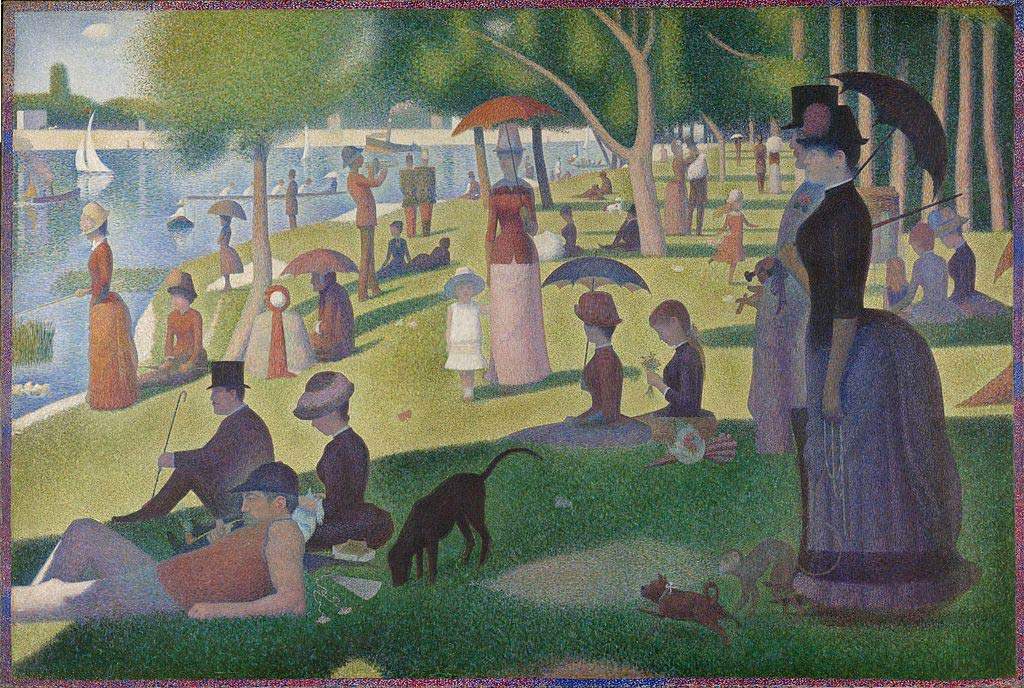
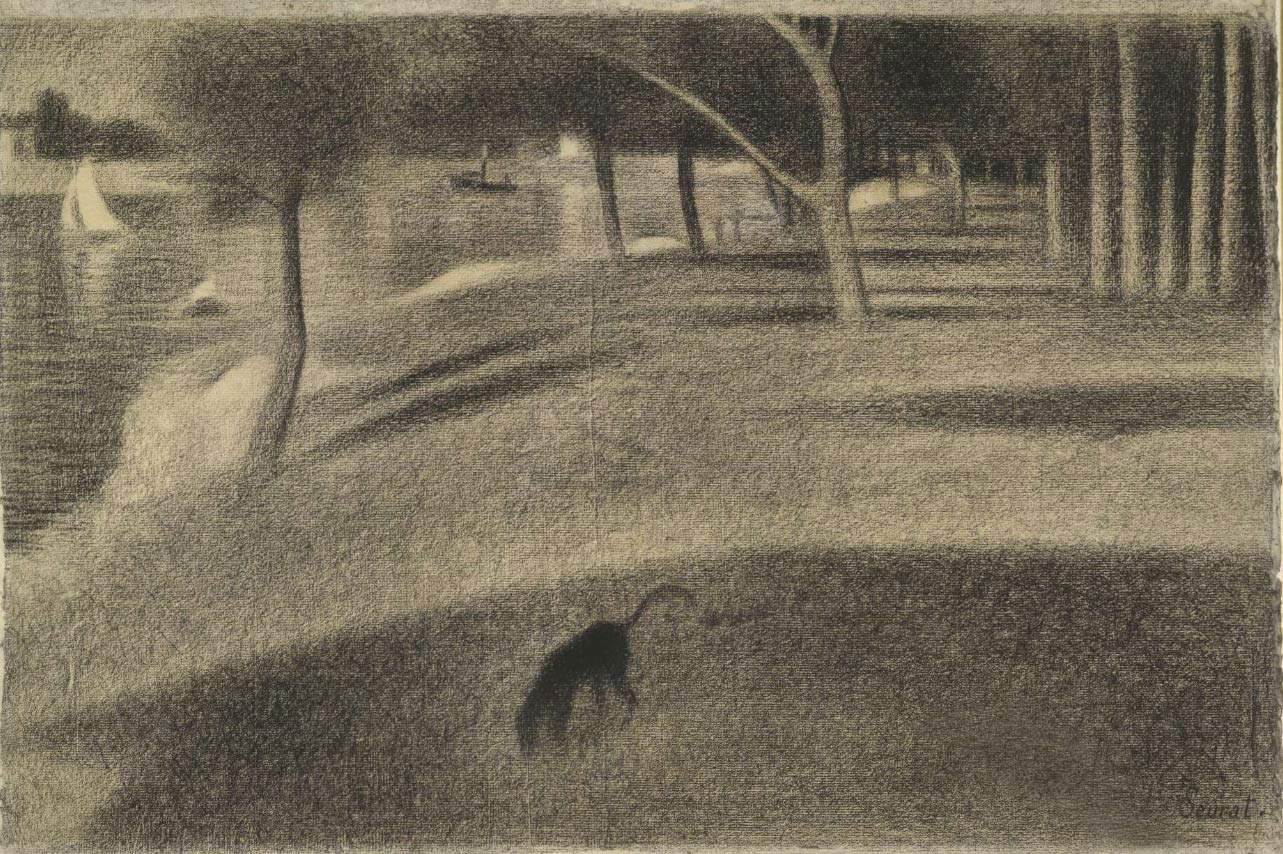
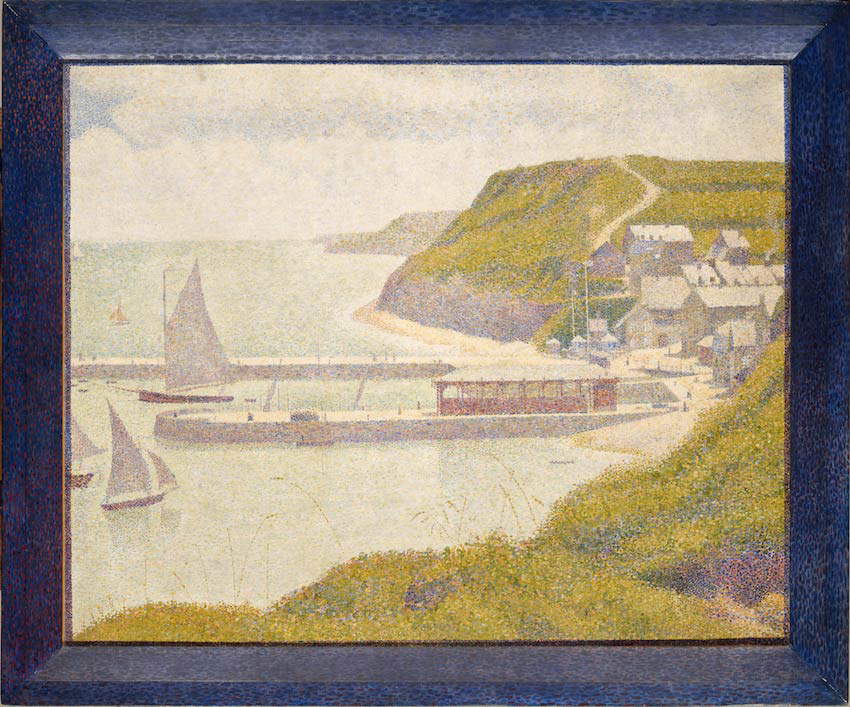

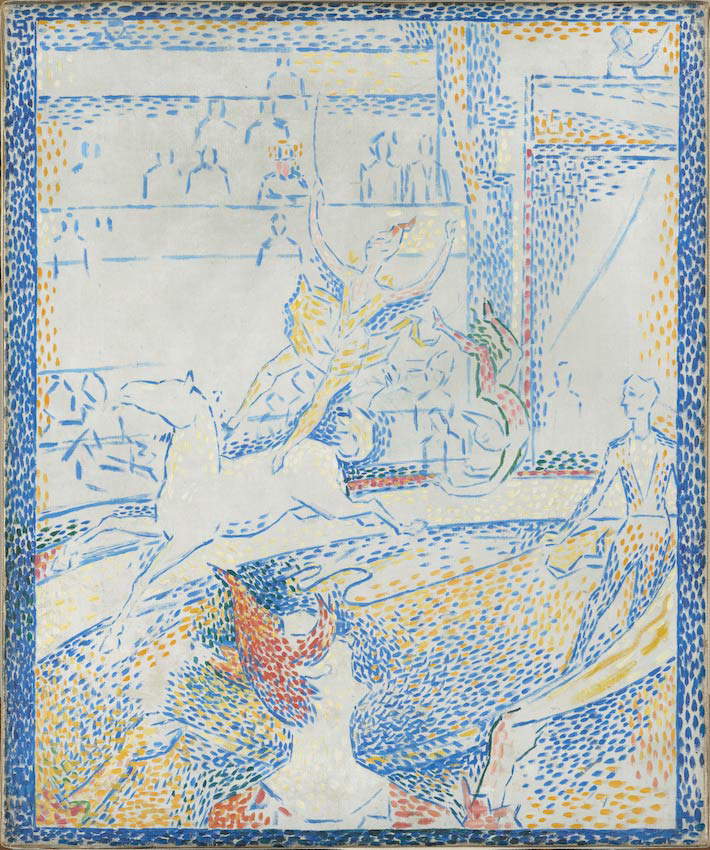
Seurat left many works, especially many drawings. Important works are, of course, found in France: in Paris, some works are kept in the Louvre, but most are in the Museé d’Orsay (for example, The Circus and its Study, Model in Profile, and some of his studies for the Grande-Jatte). In Europe we find Seurat’s works in London: the Bathers of Asnières is in the National Gallery, some of his drawings such as Walk with Dog are in the British Museum, and the Courtauld Galley also has some of his work. In the Netherlands he can be seen at the Kröller-Müller Museum in Otterlo.
In the United States of America at the Metropolitan Museum of Art in New York many important works are preserved, such as The Grasscutter, The Forest of Pontaubert and one of the studies for A Sunday in the Grande-Jatte. Also in the U.S., some works are preserved in Upperville (Virginia) at the Paul Mellon Collection, in Cleveland at the Cleveland Museum of Art, and the Art Institute of Chicago (Illinois) preserves A Sunday at the Grande-Jatte.
Unfortunately, there are no works by Seurat in Italy, except for occasional temporary exhibitions.
 |
| Georges Seurat, life, works and style of the father of pointillism |
Warning: the translation into English of the original Italian article was created using automatic tools. We undertake to review all articles, but we do not guarantee the total absence of inaccuracies in the translation due to the program. You can find the original by clicking on the ITA button. If you find any mistake,please contact us.